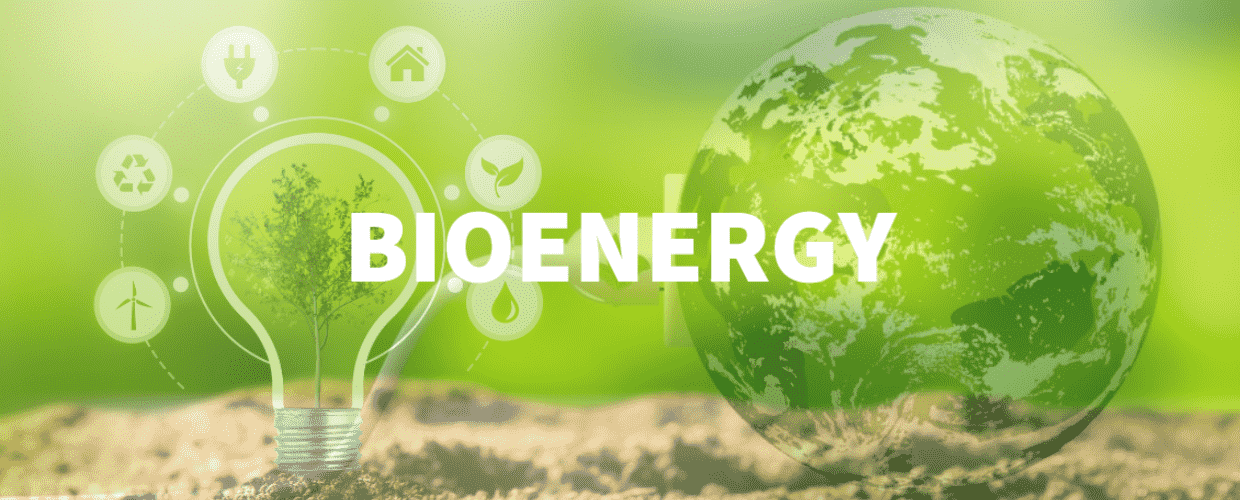Bio-power technologies convert sustainable biomass fuels into heat and electricity using processes similar to fossil fuels. This article discusses Bioenergy, how Bio-power technology applies, biofuels, plants used as biofuels, biomass, solid waste, importance bioenergy, and its market value.
What is Bioenergy?
Bioenergy is a diverse resource to help meet growing energy demand that converts renewable biomass fuels into heat and electricity. Bio-power technology generally applies three basic ways to harvest the energy kept in biomass to generate bio-power—burning, bacterial decay, and transfiguration to liquid fuel or gas. The applications of Bioenergy may include Power Generation, Heat Generation, Transportation, and Others.
In developed countries, there is a growing trend towards employing modern technologies and systematic bioenergy conversion using a range of biofuels, which are becoming competitive with fossil fuels. Much attention has been focused on sustainable alternatives, and sustainable energy can be particularly appropriate for developing countries.
What is Biofuel?
A type of sustainable energy made from living materials is known as biofuels. The most popular biofuels are biodiesel, biogas from organic byproducts, and corn-based ethanol. The limited supply of fossil fuels, regarded as nonrenewable resources, is less strained by energy from renewable resources.
Three groups can be made up of biofuels:
- Granular biofuels (fuelwood, wood residues, wood pellets, animal waste, vegetal material).
- Biodiesel liquids (biogasoline, biodiesel, bio jet kerosene).
- Biogases (from anaerobic fermentation and thermal reactions) (from anaerobic fermentation and thermal processes).
Which plant is used as Biofuels?
Several categories of Crops are used in Bio plants, including:
- Sugar Crops, such as Sugarcane, Sugar beet, and Sweet sorghum
- Starch Crops, such as Maize and Tapioca
- Oil Crops such as Soybean, Rapeseed, Coconut, and Sunflower
What is Biomass?
When we use plants and other biological materials to generate energy, we call it Bioenergy. Bioenergy is a form of sustainable energy generated from biomass fuel, which comes from natural materials such as harvest residues, purpose-grown crops, and organic waste from our homes, businesses, and farms.
“Enviva used impact quantification in its introduction and later under its climate change theme. It makes the point that it has avoided the release of 31 million metric tons of carbon dioxide equivalent emissions since its inception and equates them to four equivalent metrics. 3.5 billion gallons of gasoline not consumed. 34.5 billion pounds of coal not burned. 72.4 million barrels of oil not consumed. 5.3 million homes not using electricity for one year. This use of impacts is part of the straight line it draws from the 16 million metric tons of coal displaced to the avoided emissions and the equivalent measures. All of this illustrates its role in providing biomass to help customers reduce their carbon footprint.” ― Paul Pierroz
What is Solid Waste?
Any garbage, refuse, or discarded material is considered solid waste. It can be divided into categories based on where the trash is produced, such as municipal solid waste, health care waste, and e-waste. Annual production of municipal solid garbage exceeds 2 billion tons.
Municipal solid waste (MSW) is a source of biomass that requires little extra input and can be used for bioenergy generation.
Why are Bioenergy Important?
Energy resources will play a principal role in the world’s future. Bioenergy is still the primary energy used by people in less developed countries. Energy from biomass accounts for about 15% of the world’s immediate energy consumption and about 38% of the primary energy consumption in developing countries.
In some developing countries, Bioenergy often accounts for more than 90% of the total rural energy provided. Life in rural areas has changed dangerously over time. Commercial development in developing countries, coming at a time of low-cost plentiful oil supplies, has resulted in greater reliance on the source of Bioenergy. In rural areas, singularly in remote locations, the transmission of energy generated from fossil fuels can be difficult and expensive. Producing sustainable energy can offer a viable alternative.
Sustainable energy can facilitate economic and social development in communities, but only if the projects are intelligently designed and carefully planned with local input and cooperation.
How are growing global Bioenergy markets?
According to Fortune Business Insights, the global Bioenergy market value was USD 344.90 billion in 2019. It is expected to reach USD 642.71 billion by 2027, registering a compound annual growth rate of 8.0% from 2020 to 2027, the historical period 2016 to 2018 [1].
Several Bioenergy products became popular, including Solid Biomass, Liquid Biofuel, Biogas, and Others. Rapid depletion of fossil fuels and concerted efforts to reduce carbon emissions accelerate the Bioenergy market growth.
“An increased push for energy efficiency, renewable energy technology, electric mobility – along with the growing digitalization movement and a universal carbon pricing structure – would speed up the carbon-free future and the rise of a global middle class we desperately need. We can and must all do our part.” — Joe Kaeser




